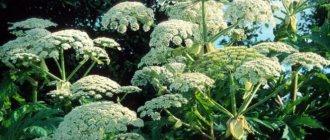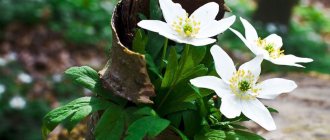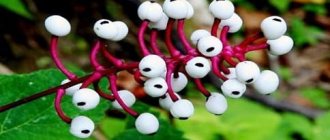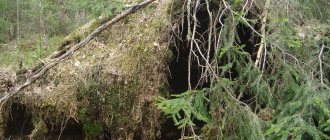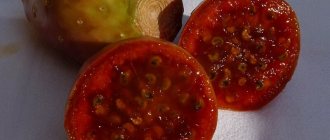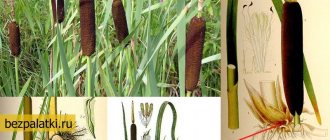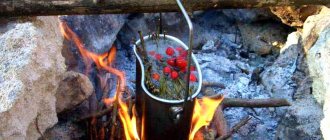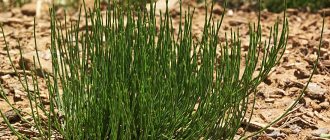Belladonna (belladonna)
It is also popularly called mad cherry or sleepy dope, beauty, etc. It is one of the most dangerous poisonous plants.
Blooms from July to autumn. The fruit is a black-blue berry, flattened and spherical, and it tastes sweet and sour.
Very often children are poisoned with these berries because they look like cherries.
Just a few berries are enough to cause serious nausea in a child. The entire plant is poisonous and contains alkaloids such as: atropine, hyoscyamine, scopolamine
Symptoms of belladonna poisoning
Signs of belladonna poisoning appear within 10-20 minutes. If the poisoning is mild, then dry mouth and burning in the throat begin, swallowing is difficult and speech is also difficult. Heart rate increased. The voice is hoarse. The pupils are dilated and do not react to light. Near vision is impaired. Fear of light, spots flash before the eyes.
Dryness and redness of the skin, the person is excited, and there are often hallucinations and delusions. Severe poisoning manifests itself in complete loss of orientation, mental agitation and convulsions. Often ends in death.
Red-fruited crow
Red-fruited crowberry is a perennial herbaceous plant with thin stems and feathery leaves. It can be found in the forests of the European part of the country. The fruits have an elongated oval shape; as they ripen, they change color from green to white, and then to red.

Red-fruited crow
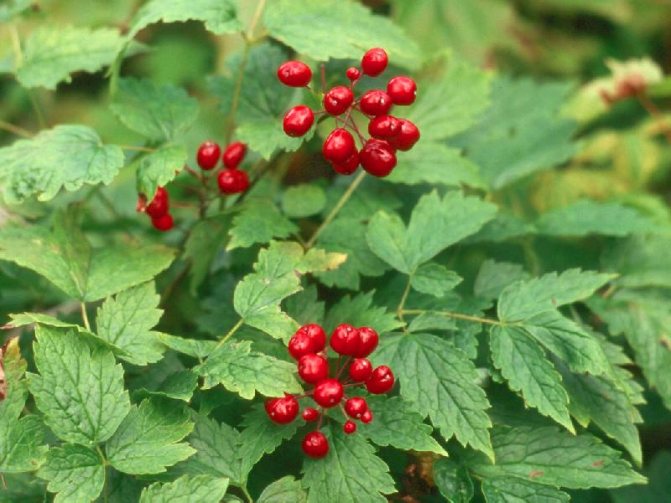
Red-fruited crow
Crow's eye
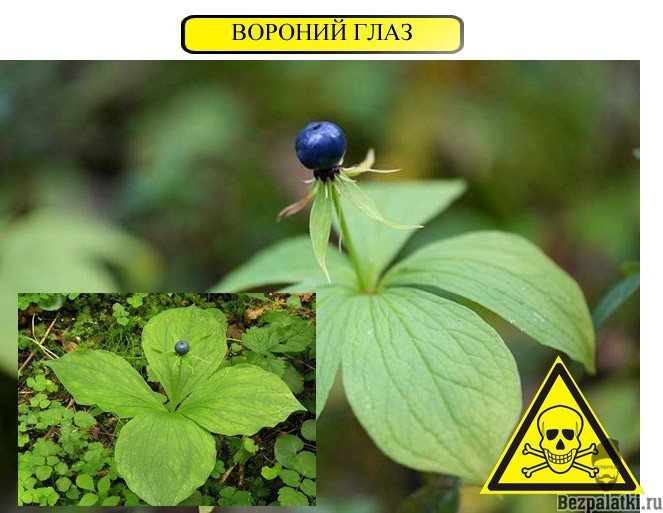
All parts of the plant are poisonous (leaves, stem, berries). 10 berries are enough to cause cardiac arrest. The plant contains a lot of cardiac glycosides.
Symptoms of crow's eye poisoning
Symptoms of departure include irritation of the gastrointestinal tract, diarrhea, vomiting, a drop in heart rate, sometimes up to 40 or fewer beats and cardiac arrest, and paralysis of the respiratory center often occurs.
If you go, immediately rinse your stomach, drink sorbent, take a laxative. Be sure to consult a doctor.
First aid for berry poisoning
The very first aid is to stimulate vomiting - this procedure will free the stomach from toxic contents. To do this, the victim needs to be given 2-4 glasses of water (you can add activated carbon to it - 2 tablespoons per 500 ml, salt - 1 teaspoon per 500 ml or potassium permanganate). The procedure will have to be carried out several times.
If medications are available, it is recommended to give the patient activated carbon, tannin, as well as any laxative and cardiac remedy. If you have seizures, you will have to use chloral hydrate. If there is no first aid kit, you can give the patient black crackers, starch solution or milk. It would also not hurt to do an enema (if possible). The victim should be wrapped warmly and taken to a doctor.
Wolf's bast, Common wolfberry (Daphne)
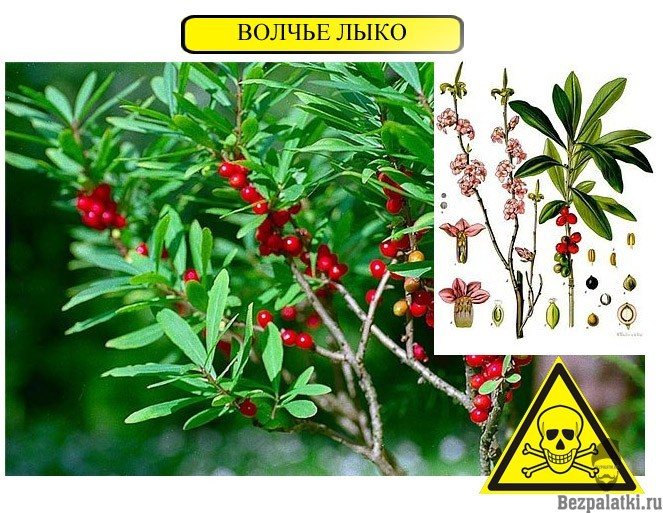
This is a shrub up to 1 meter high with fragrant flowers and very poisonous red berries. The flowers are small and look like lilacs. You shouldn't smell wolfberry flowers, because they cause headaches and actually smell like lilacs. The berries are deadly poisonous, bear fruit in the summer. The berries are red, there is a seed inside
This shrub has poisonous berries that ripen in August. The berries are oval, initially green, then turn red
Symptoms of wolf bast poisoning
After eating the berries, you experience a burning sensation in the mouth, pain in the stomach, nausea and vomiting, and weakness throughout the body. Meserein, which is part of the berries, is highly irritating to the skin and mucous membranes. Berries also contain coumarins, which cause increased bleeding. Even touching these berries is very dangerous, and if the juice gets on the mucous membrane of the eye, ulcers will appear on the cornea, which are very difficult to heal
Poisonous berries
A walk in the forest always amazes with its picturesque nature and diversity. In the plant world you can find the most interesting trees, berries and flowers. But sometimes wild fruits are not as harmless as they may seem at first glance. There is a list of poisonous berries that can not only harm humans, but also lead to death. That is why it is important to familiarize yourself with the list of dangerous fruits that can be found in the forest, because sometimes the most attractive and tempting berries turn out to be the most dangerous. Often, juicy red and black fruits pose a real threat to human life.
May lily of the valley
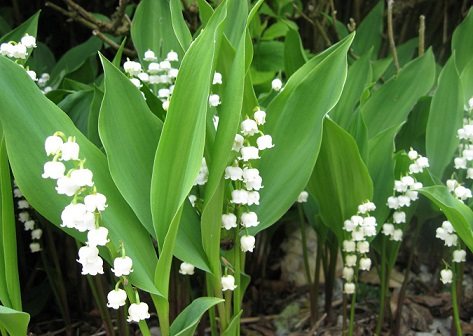
Lily of the valley is a favorite of many people. This is a beautiful plant that during the flowering period (May-June) emits a stunning aroma that is impossible to pass by. But by September, red berries, sometimes tinged with orange, appear in place of the charming flowers. The fruits look like peas, they are all poisonous and are strictly prohibited for human consumption.
Signs of poisoning by poisonous fruits include tinnitus, headache, slow pulse and convulsions.
Belladonna
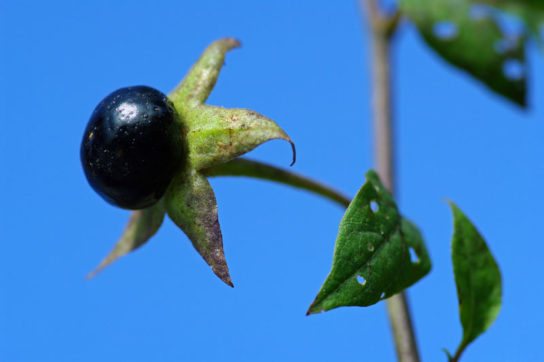
This plant can be found in other sources under the names mad berry or sleepy stupor. During flowering, belladonna has single, bell-shaped, drooping flowers. The fruit is a black-blue berry with a sour taste, which is poisonous.
Signs of poisoning include dryness and burning in the mouth, impaired speech and swallowing, and rapid heartbeat. Possible loss of orientation and hallucinations.
Maiden (five-leaf) grapes
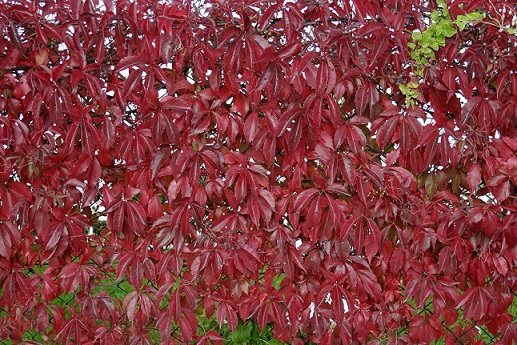
The fruits of the plant are very similar to ordinary grapes that people eat in everyday life. Poisonous berries grow dark blue in color and have a characteristic sour taste. There are also bright black fruits. In fact, to get poisoned by grapes, you need to eat a large number of berries, for example, a whole handful. A small amount of wild fruits should not cause serious consequences. But it’s still better not to risk your own health.
Nightshade bittersweet
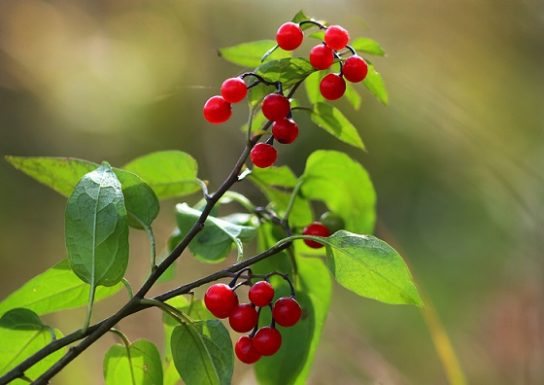
Despite the rather beautiful flowering, this representative of the wild nature is the owner of wild red fruits. They taste bittersweet and few people will like them. The berries ripen by October. You can most often meet the “gifts” of nature in Russia, Siberia and the Far East. Not only the berries of nightshade are poisonous, but also the leaves themselves.
Signs of poisoning include nausea, vomiting, abdominal pain, and cardiovascular failure.
Nightshade black
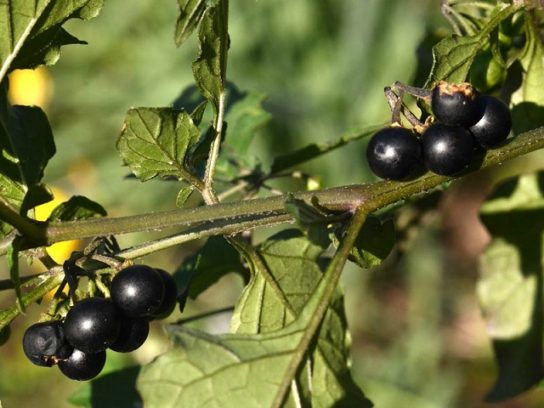
Today, the fruits of black nightshade are used in medicine in minimal quantities and in prescribed dosages. If you come across a plant in the forest, you should under no circumstances taste the berries: the representative of the plant world is completely poisonous. The fruits grow as round, attractive, black berries.
Snowberry white
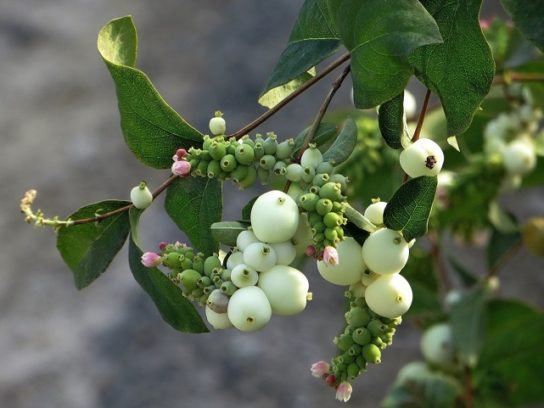
Snowberry is considered one of the most “survivable” plants. Its fruits remain on the branches or on the ground for a long time (even during severe cold spells). The berries of the plant are pale pink or white. In addition, the beads delightfully burst underfoot, producing a unique sound. Since snowberries can often be found in populated areas, children are the first victims who can taste them.
Signs of poisoning include nausea, dizziness and loss of consciousness.
Buckthorn brittle

The fruits of this plant ripen in August. In appearance, these are black berries, sitting in the axils of the leaves, which are used medicinally in a certain dosage. Despite the fact that birds happily consume the fruits, it is not recommended for humans to eat buckthorn berries.
Signs of poisoning include vomiting, diarrhea and general malaise.
Forest honeysuckle
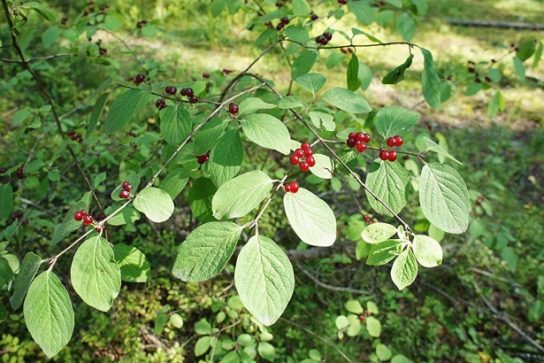
One of the most common shrubs in the forest is honeysuckle. The plant has red and juicy-looking berries, which are located in pairs on the branches. For birds, honeysuckle fruits are edible and even a delicacy; for humans, their consumption is destructive. Today, the berries are used in medicine, but if a person eats several fruits of the plant, the concentration of harmful substances will be very undesirable, which will certainly have negative consequences.
Spotted arum
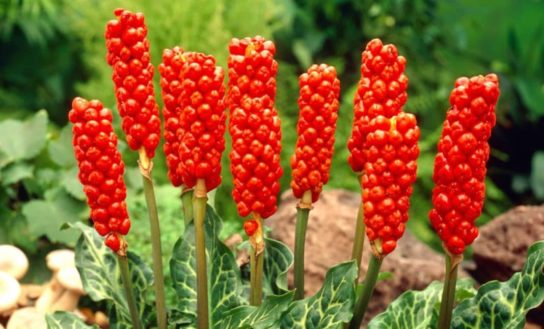
The plant is perennial and poisonous. However, it is often used in medicine and is considered safe only if overdose is excluded. The fruits of this plant are reddish in color. You can find spotted arum in the forests of Moldova, Ukraine, Central Europe and the Caucasus.
Wolf's Bast
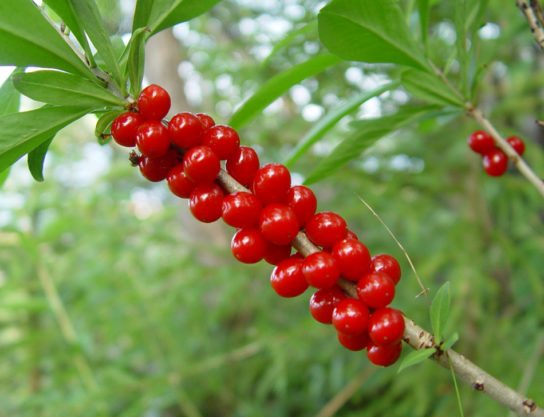
This plant is considered one of the most beautiful and often takes part in decorating landscape areas. However, the bush poses a mortal danger to humans. Absolutely everything in it is poisonous, from the bark and leaves to the fruits. “Gifts” of nature can be red, yellow or black.
Kupena fragrant
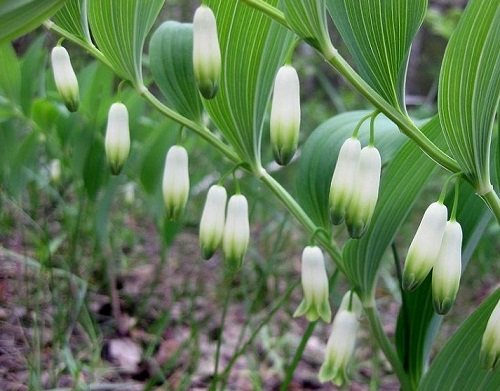
A representative of lilies and lilies of the valley grows in Eurasia and North America. Despite the plant's unusual and attractive leaves, the bluish-black berries are poisonous. Today, the fruits and leaves of the plant are used in medicine and are considered medicinal, but in case of overdose they can cause significant harm to human life.
Red-fruited crow

The fruits of the perennial plant are represented by red, elongated oval berries. They are arranged vertically and initially grow green, after which they completely change color and complete the ripening stage. This plant can be found in the forests of Russia, Siberia and the Far East.
Signs of poisoning include dizziness, nausea, and gastrointestinal upset.
Voronets spica
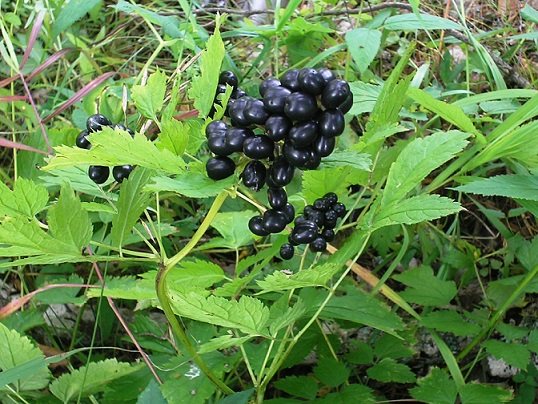
The poisonous plant in some sources is indicated as black crow. Initially, the fruits are green, after which they become black, glossy, large and oval-cylindrical in shape. The berries are collected in a brush. The plant grows in Russia, the Caucasus and Altai. Ripening occurs in July-August.
Signs of poisoning include the appearance of blisters on the skin and diarrhea.
Elderberry herbal
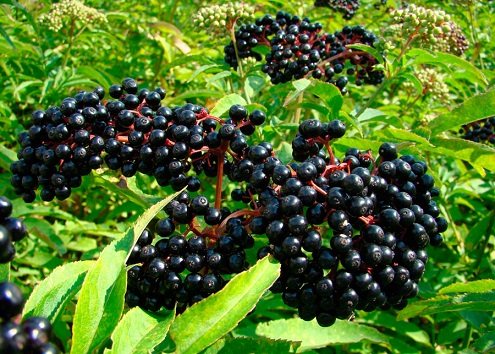
A perennial plant with an unpleasant odor, it has black, small berries with 3-4 seeds and red juice. Fruit ripening occurs in August and September. The most common plant is in Russian forests and subalpine meadows.
Signs of poisoning include headache, sore throat, nausea, vomiting, and abdominal pain.
Phytolacca americana

Quite often the plant can be found even in city flower beds. Unfortunately, not everyone knows that it is completely poisonous: leaves, inflorescences, and fruits are carriers of harmful substances. Young children are especially susceptible to the effects of poison. Phytolacca berries are lilac in color and arranged vertically.
Signs of poisoning include increased salivation, burning in the mouth, and cramps in the stomach or intestines.
Yew berry
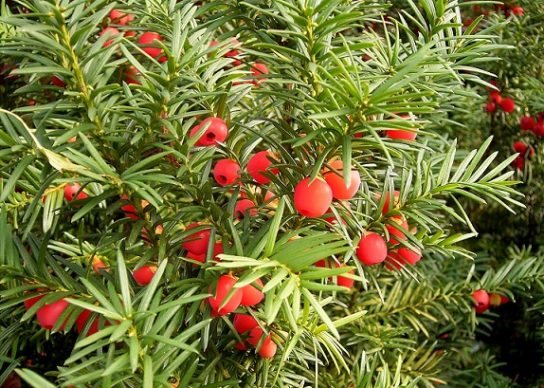
One of the most common plants that is planted to decorate the area. Yew fruits have a bright scarlet color and are safe in the fleshy part. The seeds and wood, as well as the bark and shoots, are poisonous. They can cause respiratory arrest and have a paralyzing effect on the heart.
Swamp whitewing
The plant blooms in late spring and early summer. This is a truly beautiful picture, but the fruits of the calligraphy are unusually dangerous for humans. Juicy red berries are collected in clusters and, when consumed, can cause nausea, shortness of breath, tachycardia, vomiting and severe salivation. The entire plant is poisonous.
Common privet
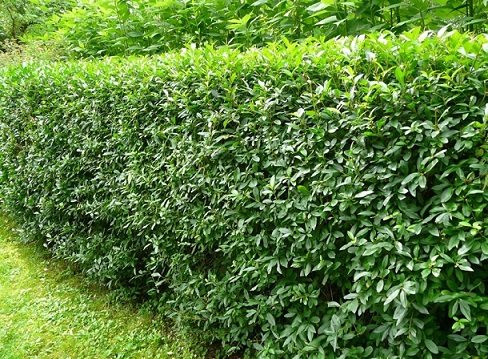
The heat-loving shrub has black fruits that ripen in early and mid-autumn. They do not fall off for a long time and attract people with their stunning appearance. You can find privet berries in Russia, Moldova, Ukraine and the Caucasus. Leaves and berries should absolutely not be consumed. Many people confuse the fruits of the plant with blueberries and experience side effects such as colic, diarrhea, weakness and convulsions.
Crow's eye four leaf

This type of plant is quite unusual and after flowering it produces only one fruit - a black berry resembling a raven's eye. A representative of the plant world is growing in Russia, Europe and the Far East. The use of plant berries in medicine is quite common, but collecting and self-medicating is highly not recommended.
Signs of poisoning include nausea, vomiting, a drop in heart rate, and even cardiac arrest.
Euonymus

The fruits of this plant have an attractive bright pink color. They grow in the form of four separate capsules containing black seeds inside. The flesh of the poisonous berries is fleshy orange or red. The plant is mainly found in Russia, Kazakhstan, and Sakhalin. After consumption, a person may notice a deterioration in their health. With large doses, intestinal bleeding is possible.
When going into nature, it is necessary to have an idea of all the dangers that a person may encounter. If it so happens that someone close to you has eaten poisonous berries, it is necessary to provide first aid in case of poisoning. This will help save a person's life. The first thing that is recommended to do is to induce vomiting in the victim and immediately call an ambulance (go to the hospital). Before medical personnel arrive, it is recommended to rinse the stomach and wrap the person warmly.
There is no need to try unfamiliar berries in the forest, because the consequences of a momentary temptation can be irreversible.
Elderberry black, red and herbaceous
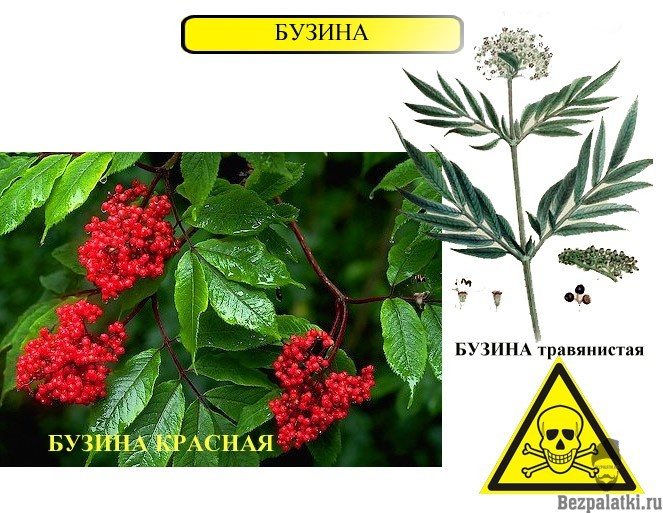
Ripe black elderberry berries are often used to make jam and compotes, but unripe berries are poisonous.
Two types of elderberry are poisonous: elderberry (red) and elderberry. These types of elderberries contain cyanoglycosides. It is not difficult to recognize poisonous elderberry species. Red elderberry is a low shrub or tree up to 4 meters. The leaves are pointed, lanceolate, the flowers are white, with a greenish and yellowish tint. The fruits are red berries collected in a “panicle”
Symptoms of elderberry poisoning
Elderberry poisoning causes dizziness, headache, weakness, sore throat, abdominal pain, nausea, and vomiting. Typically, the mucous membranes are stained blue as a result of the accumulation of oxyhemoglobin in the venous blood. Tachycardia gives way to bradycardia in the later stages. There is shortness of breath with a delay in exhalation, convulsions are possible. Death occurs from respiratory arrest due to acute heart failure.
Elder
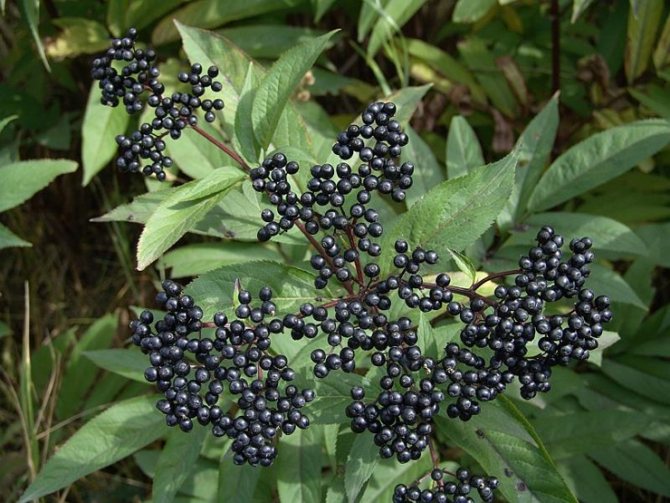
Elderberries are beautiful dark blue berries that hang on the bright red branches of the elderberry tree. They are most common in Europe, but are imported to many countries.
Elderberry leaves, seeds and twigs contain a glycoside, a substance that makes cyanide. Some of the typical symptoms of poisoning from these berries include diarrhea, vomiting and nausea.
Crow berries (voronets)
A herbaceous plant 30-50 cm high. The flowers of the plant are white, small, but noticeable quite well. The leaves of the plant are complex, consisting of several leaf blades. Leaves with serrated edges.
Unknowingly, it can be confused with young umbelliferous plants, for example, with honeydew
The upper one has two lateral teeth, not symmetrical to each other. The berries are oblong black, white or red. The berries are collected in a bunch. The smell of the berries is unpleasant; they appear in July - August. The plant contains alkaloids that irritate the skin. If you touch the plant, blisters may appear on the skin.
In central Russia, Voronets spica (with black berries) is most often found; Voronets with red berries are found mainly in Siberia.
Previously, black paint was made from Voronets, for this it was boiled with alum
Symptoms of poisoning
Inhibited state. Vomiting, diarrhea, intestinal inflammation (very severe). Despite this plant, it is considered medicinal and in microdoses is successfully used in medicine for many diseases.
Cloudberry
It is a herbaceous subshrub, up to 30 cm high. It is a resident of the Far North, and for its growth it chooses swamps and marshy areas, tundra and areas covered with moss.
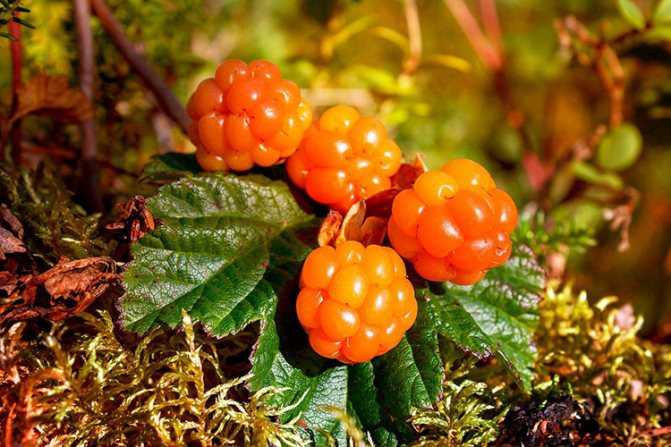
The ripe cloudberry fruit is an orange-colored drupe that visually resembles raspberries. Moreover, initially, in an unripe state, cloudberries are red in color. It ripens quite quickly. Its flowering begins in June, and the fruits ripen by August.
Because of its bright orange color, cloudberries are popularly called “swamp amber.”
It is quite difficult to grow cloudberries at home, since there are no garden varieties of them. Those who want to acquire this berry on their plot will have to deal with wild cloudberries, which do not really like unusual conditions.
Nightshade bittersweet
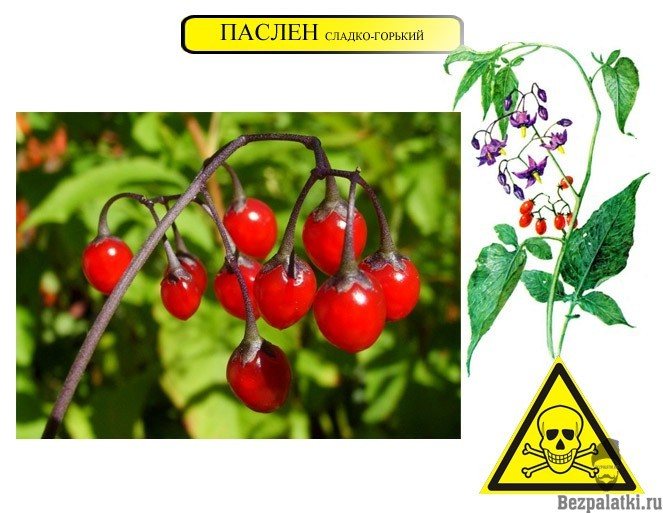
A subshrub with a woody base and a long curly stem. Red berries are poisonous. Ripens June-October. Contains solanine, solasodine, dulcamarin glycoside and other substances.
Symptoms of poisoning
Nausea, diarrhea, vomiting, abdominal pain, weakness, difficulty breathing, arrhythmia (pulse disorder), pupils dilate. In severe cases, destruction of red blood cells (hemolysis), jaundice, liver problems.
Yew berry
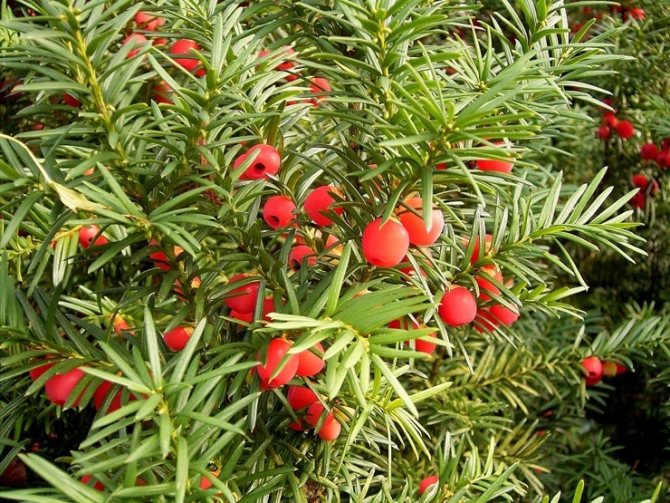
This tree has gorgeous blood-red berries and they grow in North America, Europe and the Middle East. The yew looks innocent - it's just a typical tree with green leaves. But while the bright red berries are not poisonous, the bark, seeds and leaves can be lethal to humans.
Less severe symptoms of poisoning include diarrhea, headache, dizziness, muscle weakness, stomach pain, vomiting and trembling, while more severe symptoms include severe breathing difficulties, coma, seizures, irregular heartbeat and, of course, death .
Botanical description
The perennial plant snowberry belongs to the deciduous genus and the honeysuckle family. Translated from Latin, its name sounds like “fruits gathered together”, due to the fact that the berries are densely collected on a branch. Popularly, shrubs with white balls are called wolf berries. It may also be called white snowflake.
Snowberry is an elegant and beautiful shrub. Its thin branches reach 1.5 meters or more in length. They are flexible and almost never break under the weight of berries. During the flowering period from late summer to early autumn, small flowers with corollas of different colors appear on the plant:
- white;
- pink;
- red;
- coral

The leaves are oval in shape and up to 5 cm in size. At the beginning of autumn, white berries appear and burst. These are peculiar round fruits collected in tassels, each berry 1 cm in diameter. They contain only two seeds. After ripening in the fall, they survive frosts and persist until spring.
This unpretentious plant is native to North America and Canada. A rare black variety grows in China. In the wild, the snowberry prefers the lower tiers of coniferous forests or the Pacific coast. It can often be seen on the western mountainous slopes and ocean shores. In the regions of the central zone, whiteberry is found almost everywhere.
Belladonna
This poisonous berry has many names, the most common of which are mad berry and belladonna. It belongs to the nightshade family. Its main habitat is dark forests, clearings or clearings. Most often found in the Caucasus.
It is a plant with a long purple stem. The flowers are yellow-lilac and bell-shaped. After flowering, single black berries appear. They cannot be eaten.
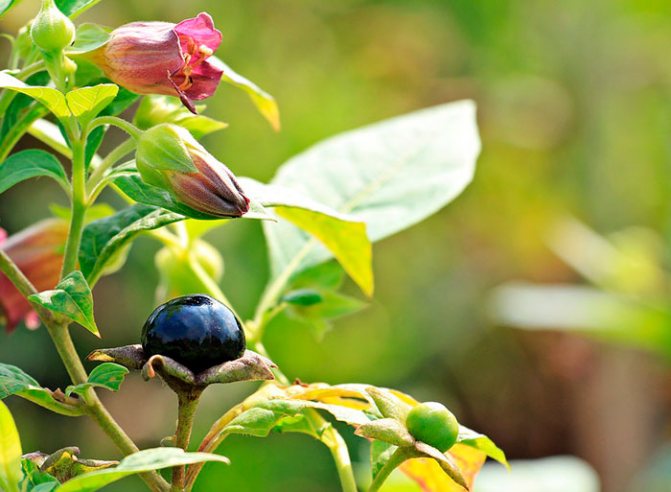
Belladonna
In case of poisoning, the following symptoms appear: burning in the mouth, difficulty speaking and swallowing. These symptoms begin to appear quite quickly - within 10-15 minutes. When the poison spreads throughout the body, a rapid heartbeat is observed, vision becomes blurred, psycho-emotional agitation appears, as well as hallucinations. If there is a large amount of poison in the body, then skin redness is observed, and it becomes difficult to control one’s actions.
Voronets spica
Voronets spica is a perennial herbaceous plant with a thin stem and large feathery leaves on long petioles. Oval-cylindrical, slightly flattened and collected in a vertical brush, the berries change color from green to black. This plant can be found in the European part of Russia, as well as in Western Siberia.
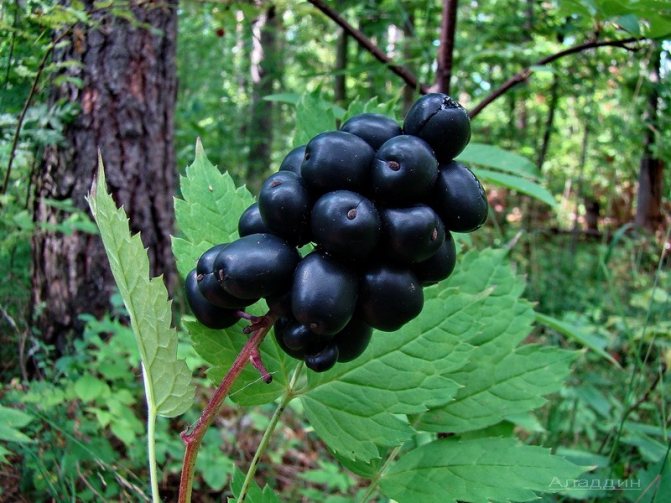
Voronets spica
Voronets spica
Inedible berries
In addition to poisonous berries, inedible ones are also found in Russia. They do not pose any particular danger, although they are not suitable for consumption. One of these species is brittle buckthorn. The shrub prefers areas near streams, lakes and rivers. The berries begin to ripen in August.
Here's how their color changes:
- green;
- greenish-yellow;
- yellow-red;
- red;
- black.

At the same time, you can see fruits of different shades on the bush. The drupes are hidden in the axils of the leaves, each berry is attached to a stalk. In official medicine, preparations prepared using buckthorn bark are used as an emetic and laxative. Fruits are also mentioned in folk recipes, but their benefits have not been proven. However, they do cause diarrhea and vomiting, so it is best not to eat them unless necessary. Birds readily feast on ripe buckthorn - it is harmless to them.
Forest honeysuckle is another inedible species. The shrub is used for decorative purposes. Forest honeysuckle berries are bright red. A distinctive feature is the paired arrangement. Birds peck ripe fruits, but people should not try them. There is no risk of poisoning, but vomiting or diarrhea may occur, since the berries have an emetic and laxative effect.
Edible honeysuckle is a close relative of the forest honeysuckle. In autumn, oblong dark blue berries, covered with a thin coating, ripen. Many varieties of edible honeysuckle have been developed, and work in this direction continues. The cultivated species can also be found in the forest, as birds peck the berries and spread the seeds tens of kilometers around.
Red nightshade
This poisonous berry grows throughout Russia. It is most often found in damp areas, in forests, near lakes or rivers. The appearance of the plant is a small shrub, its stems curl, and the flowers have a purple hue, the berries are small scarlet.
The plant begins to flower in June and bears fruit until October. The important thing is that the poison is found not only in the poisonous berries, but also in the leaves and stems of the plant.
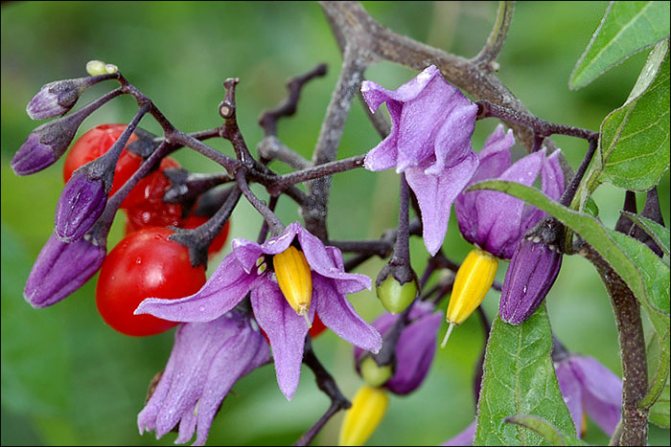
Red nightshade
The first signs of poisoning are lethargy and clouding of consciousness. Pain appears in the abdominal area, and there may be nausea. The danger of poisoning with these poisonous berries lies in the fact that it has a major effect on the heart, which can result in suffocation. If you are poisoned by berries, first of all, you urgently need to rinse your stomach, and then go to the hospital.
